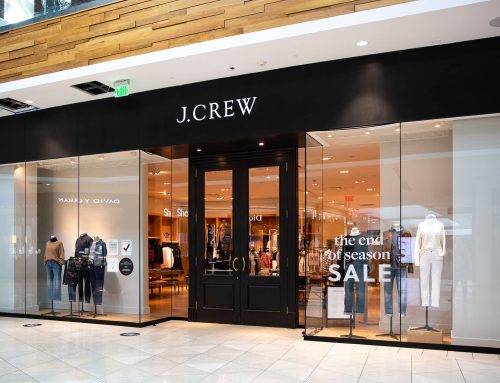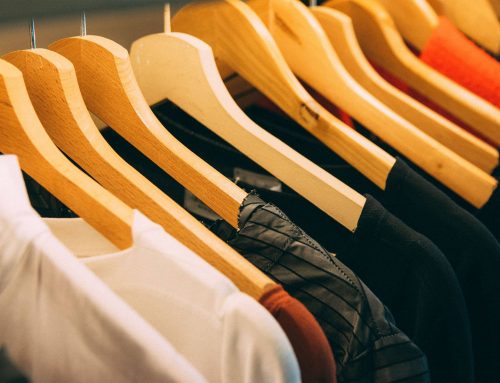We may earn money or products from the companies mentioned in this post at no additional cost to you.
How To Invest In Fashion: A Guide to Investing in Style
Investing in fashion can be lucrative, and savvy investors should understand the rules to maximize their returns. With a recession seeming almost imminent, I’m here to offer some tips on how to get started investing in this sector.
First off, it’s important to recognize the potential of fashion investments. From luxury brands like Chanel and Hermes to fast-fashion giants like Zara and H&M, there are numerous opportunities for people looking to invest in fashionable items or companies. Not only is there money to be made from buying up stocks and shares in these businesses, but even individual products can have value if you know when and where to buy them.
Finally, understanding the trends that drive the industry is essential for making sound decisions about which companies or products will give you the best return on your investment. Staying ahead of shifts in consumer preferences and staying abreast of new technologies can help you stay one step ahead of the competition and ensure that your investments pay off over time. With these strategies at hand, let’s dive into all the ways you could benefit from investing in fashion.
Basics Of How To Invest In Fashion
Investing in fashion can be a lucrative and exciting venture. However, it requires an understanding of the market, trends, and what it takes to make money. For those looking to break into this industry, here are some basics you should know.
First off, understand that investing in fashion isn’t like buying stocks or other traditional investments; there is no one-size-fits-all approach. You must consider factors such as brand recognition, fabric quality, target demographic, seasonality of products, etc., when deciding which items to invest in. Additionally, keep up with current trends so you don’t miss out on emerging fashions that could turn into big profits for investors.
Finally, it’s important to remember that fashion investment involves risk, just like any other type of stock trading or investing activity. However, if done correctly and with proper research and knowledge of the market, you can achieve success with your investments over time. So do your due diligence before diving into the world of fashion investment – it’ll pay off!
Can You Invest in Fashion Brands on The Stock Market?
Yes, you can invest in fashion brands on the stock market. Many fashion companies are publicly traded, meaning their stock is available for purchase on the stock market. Examples of publicly traded fashion companies include Nike, Abercrombie & Fitch, Gucci, and Gap Inc.
Investing in fashion brands on the stock market can be a great way to diversify your portfolio and benefit from the growth of the industry. It is important to research companies before investing in them, as some may be more risky than others. Additionally, there are many other ways to invest in fashion, such as ETFs, mutual funds, and venture capital funds. Each of these has its own advantages and disadvantages, so it is important to research what works best for you and your goals. Investing in fashion brands can be a great way to reap the benefits of a growing industry, and make sure you are getting the most out of your investments.
Top Fashion Brands to Invest In
Nike (NKE)
Stock Price120.10 USD
Gucci (Kering)
Stock Price64.99 USD
Adidas (ADR)
Stock Price84.57 USD
Louis Vuitton (LVMH)
Stock Price180.55 USD
Prada (PRDSY)
Stock Price7.16 USD
Burberry (BURBY)
Stock Price31.41 USD
Hermes (HESAY)
Stock Price31.41 USD
Seiko (SEKEY)
Stock Price2,895 JPY
GAP (GPS)
Stock Price9.51 USD
Abercrombie & Fitch Co (ANF)
Stock Price26.75 USD
Types Of Investment Opportunities
The first option is investing directly in the fashion industry. This approach involves buying stocks or bonds from companies designing, manufacturing, or distributing clothing and accessories. These companies typically have established brands with loyal customers, making them relatively safe investments. However, investing in smaller businesses may offer more growth potential but carrying additional risk is also possible.
Another type of fashion investment opportunity is through venture capital funds focused on the sector. Investors can gain exposure to up-and-coming designers and other new businesses without having to do all the work by researching individual firms and evaluating their prospects for success. These funds usually provide more diversification than direct investments because they spread money across multiple companies instead of just one firm at a time.
Lastly, private equity funds are designed specifically for those looking to invest in fashion startups or expand existing businesses within the industry. Fund managers typically employ rigorous due diligence processes before selecting which firms will receive funding, making this a safer alternative than investing directly into individual firms without professional oversight. Investing via this method requires larger amounts of capital than most retail investors possess; however, it can be worth considering if you have access to significant sums of money, as returns tend to be higher than traditional stock market investments over the long term.
Key Factors To Consider
When investing in fashion, there are a few key factors to consider. Firstly, research is essential. Knowing the trends and styles that will be popular in the coming season can help investors determine which garments or accessories will likely bring a return on their investment. Additionally, it’s important to pay attention to market conditions and industry news – including changes in consumer spending habits and emerging designers – as these can influence investments significantly.
Secondly, assessing potential risks associated with any given investment should also factor into decision-making processes. Understanding what could potentially go wrong with investment and how best to manage those risks is essential for minimizing losses. This includes considering factors such as production costs, distribution channels, customer feedback, product recalls, etc., which may all affect returns over time.
Finally, having realistic expectations of the expected rate of return on investment is critical. Being aware of both short-term and long-term goals when making fashion investments helps ensure they align with financial objectives while minimizing risk exposure at the same time. It’s also worth evaluating different options available in terms of products or services offered by various vendors before committing funds to any particular venture. Taking these steps ensures that every investor understands where their money is going and why they’re investing it in the first place.
Strategies For Maximizing Returns
Having discussed the key factors to consider when investing in fashion, it’s time to look at strategies for maximizing returns. Firstly, an investor should focus on quality over quantity. Investing in a few high-quality pieces that are likely to hold their value is preferable to buying many low-cost items with limited potential for appreciation. Furthermore, there’s also the option of short-term investments, such as trend-driven products or vintage garments that may not retain their value but can offer quick gains if sold quickly.
Secondly, research is essential before committing any funds to fashion investments. Knowledge of the market and a deep understanding of the brands involved will help investors make informed decisions. They should be aware of current trends and how they might affect the price of certain items, as well as keep up with news regarding new collections and collaborations, which could increase demand and, therefore, prices.
Finally, diversification is key; spreading investment across different types of apparel – such as streetwear, luxury garments, accessories, etc. – reduces risk while providing more opportunities for profit maximization. Additionally, holding onto some capital reserves allows flexibility during volatile markets so that investors can take advantage of sudden drops or surges in prices. With these tips in mind, investors should have no problem making smart choices when it comes to investing in fashion.
How To Invest In Fashion
To conclude, investing in fashion can be a great way to make money and diversify your investments. It’s important to do your research before diving into the industry so you can find an opportunity that works for you and maximize returns. I’ve outlined some key factors to consider when making any investment decision: types of opportunities, strategies for maximizing returns, and potential risks associated with investing in fashion. By keeping these points in mind, you’ll be well on your way to success as a fashion investor.
Personally, I’m excited about the potential of this industry. Fashion is constantly changing, which means there are always new trends emerging for investors to explore. As long as you’re aware of the inherent risks involved and take measures to mitigate them, you should have no problem finding financial success through fashion investing. So go ahead—take the plunge!





